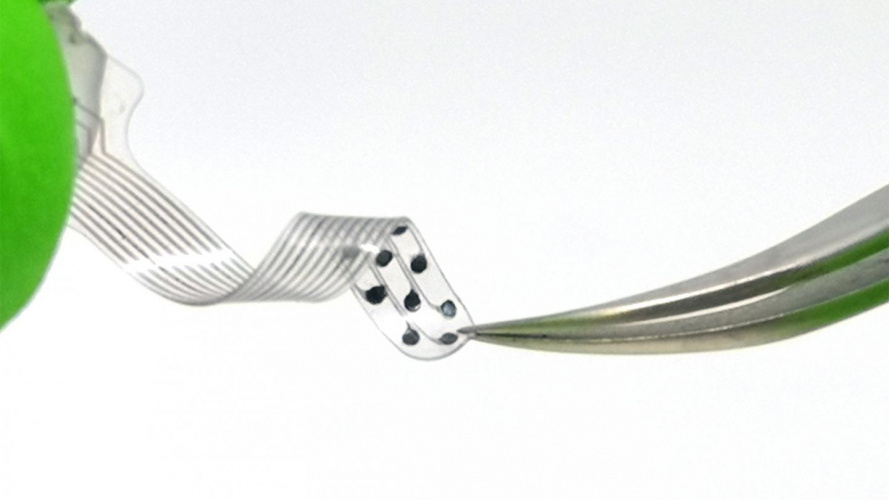For patients with damage to the inner ear, traditional cochlear implants are unable restore hearing. What’s required is direct electrical stimulation of the auditory brainstem, achieved using an auditory brainstem implant (ABI). But the success of these neuroprosthetic ABIs has so far been limited, with patients often only recovering sound perception as opposed to full hearing.
Medical 3D printing utility extends to flexible devices
3D printing offers customised prosthetics to reverse hearing loss
Until now, clinical ABIs have tended to be stiff and have not been able to conform to the curvature of the auditory brainstem. The new implant, developed by engineers at the École polytechnique fédérale de Lausanne (EPFL), is made from a pliable platinum array with a soft electronic interface. It is highly elastic and conforms neatly to the curved surface of the auditory brainstem, allowing it to send targeted electrical signals.
"We focused on platinum because it's already used widely in clinical settings," said Nicolas Vachicouras, a post-doc at EPFL's School of Engineering and lead author of the study, which appears in Science Translational Medicine.
The implant consists of a conformable array of platinum electrodes encased in silicone. But platinum is a rigid metal that can’t be distorted without being damaged. This was overcome by applying the traditional Japanese paper-cutting technique of kirigami, etching a Y-shaped pattern into metallised plastic segments. The EPFL team then machined the metal at the micron scale using techniques commonly found in the microfabrication of integrated circuits. The result is a very compliant and highly conductive electrode implant.

The EPFL team worked with clinicians from Harvard Medical School and Massachusetts Eye and Ear to develop the device. So far, the implant has only been tested on mice, but has now been produced at a size suitable for human use and in a form compatible with current surgical techniques. According to the researchers, other applications for the implant are already being explored.
"The properties of our device would be of value for all sorts of implantable neuroprosthetics, such as those used to stimulate or record neural activity in the spine, brain or even peripheral nerves," said Stéphanie Lacour, who heads up EPFL's Laboratory for Soft BioElectronic Interface (LSBI).










Fusion inches closer as ITER completes magnet system
I believe the purpose of ITER isn't to make usable power, it is a research project which will be used to design the first generation of actual...